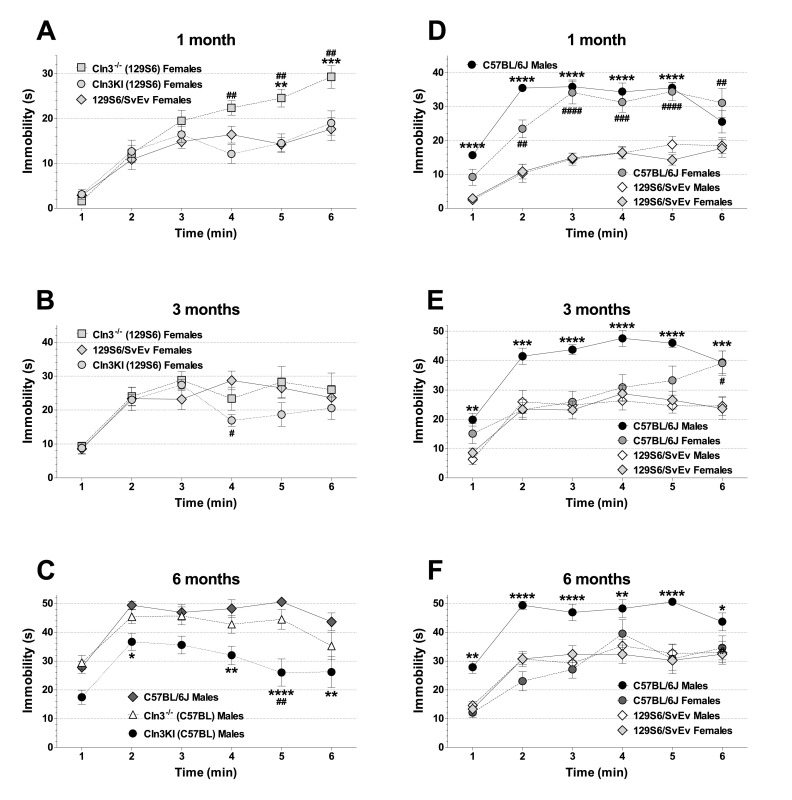Fig. 6.
Differences in the time course of immobility at 1, 3 and 6 months of age. Mice were suspended by their tail 45 cm above table level, and the duration of immobility was measured in 1-minute bins for 6 minutes. Symbols and bars represent mean±s.e.m. (n=10–12). Statistical significance was determined by repeated measures 2-way ANOVA with Bonferroni’s post-test for pairwise multiple comparisons. (A) On the 129S6/SvEv background, 1-month-old Cln3−/− females spent more time immobilized than Cln3Δex7/8-knock-in (Cln3KI) females (##P<0.01) or WT females (**P<0.01, ***P<0.001) in the 4th, 5th and 6th minutes of the test. (B) On the 129S6/SvEv background, 3-month-old Cln3−/− females stayed immobilized significantly longer than Cln3Δex7/8-knock-in (Cln3KI) females in the 4th minute of the test (#P<0.05). (C) Six-month-old Cln3Δex7/8-knock-in (Cln3KI), but not Cln3−/−, males on the C57BL/6J background spent significantly less time immobilized than C57BL/6J WT males in the 2nd, 4th, 5th and 6th minutes of the test (*P<0.05, **P<0.01, ****P<0.0001). The difference between Cln3Δex7/8-knock-in (Cln3KI) and Cln3−/− males is only statistically significant in the 5th minute (##P<0.01). (D) One-month-old C57BL/6J WT mice, both males and females, stayed immobilized significantly longer than 129S6/SvEv WT mice. C57BL/6J males versus 129S6/SvEv males: ****P<0.0001; C57BL/6J females versus 129S6/SvEv females: ##P<0.01, ###P<0.001, ####P<0.0001. (E) Three-month-old C57BL/6J WT males stayed immobilized considerably longer than 129S6/SvEv WT males in every minute of the test (**P<0.01, ***P<0.001, ****P<0.0001). The difference between C57BL/6J and 129S6/SvEv WT females is only statistically significant in the 6th minute (#P<0.05). (F) Six-month-old C57BL/6J WT males stayed immobilized considerably longer than 129S6/SvEv WT males in every minute of the test (*P<0.05, **P<0.01, ****P<0.0001). No difference between 6-month-old C57BL/6J and 129S6/SvEv WT females was found.

